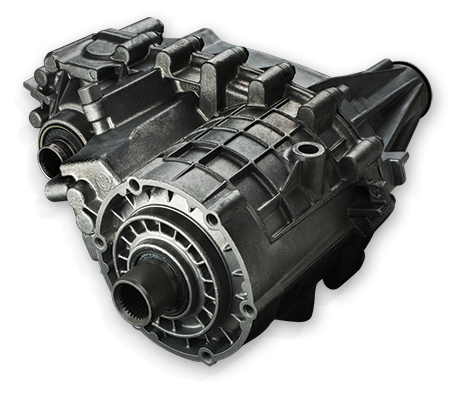So, what exactly is a transfer case? Well, think of it as the superhero in your four-wheel drive vehicle. It's a component that's responsible for distributing power to both the front and rear wheels. In simpler terms, it's the brain behind your car's ability to tackle rough terrain and conquer those off-road adventures.

Transfer cases play a crucial role in four-wheel drive vehicles. Without them, you'd be stuck with only two-wheel drive, which isn't ideal when you encounter slippery or uneven surfaces. By engaging the transfer case, you can optimize your vehicle's power delivery and traction, allowing you to drive confidently in challenging conditions.
One of the main purposes of a transfer case is to distribute power to all four wheels of your vehicle. By doing so, it ensures that your vehicle maintains traction on slippery surfaces or rough terrains. So, whether you're driving on a muddy trail or navigating through snowy roads, your transfer case helps you stay in control.
How often should I change the fluid in my transfer case?
The frequency of transfer case fluid changes can vary depending on the vehicle's manufacturer recommendations and usage. It's generally recommended to check the owner's manual for specific intervals. However, a common guideline is to change the transfer case fluid every 30,000 to 50,000 miles (or as advised by your vehicle's manufacturer).
Another nifty function of a transfer case is the ability to switch between two-wheel drive and four-wheel drive modes. In two-wheel drive, power is delivered to either the front wheels (in front-wheel drive vehicles) or the rear wheels (in rear-wheel drive vehicles). However, when you engage the transfer case into four-wheel drive mode, power is evenly distributed to all four wheels, giving you that extra traction and stability.
The transfer case consists of input and output shafts. The input shaft connects to the transmission, while the output shaft delivers power to the front and rear differentials. These shafts work together to transfer power from the engine to all four wheels.

Within the transfer case, you'll find a complex system of gears. These gears provide different gear ratios, allowing you to adjust the power distribution based on the driving conditions. Whether you need more power for climbing steep hills or better fuel efficiency for smooth highways, the transfer case gears have got you covered.
Just like any superhero needs its fuel, a transfer case requires the right fluid to perform at its best. Transfer case fluid helps to lubricate the gears, ensuring smooth operation and preventing unnecessary wear and tear. Regularly checking and replacing this fluid can help extend the life of your transfer case and keep it functioning optimally.
Transfer cases, like any other vehicle component, can experience problems over time. Here are some common signs that indicate your transfer case may be in need of attention:
- Grinding or clicking noises: If you hear unusual noises, especially when shifting into four-wheel drive or while driving, it could be a sign of a problem with your transfer case.
- Difficulty shifting: If you have trouble shifting into four-wheel drive or notice a delay in engagement, it could indicate issues with the transfer case.
- Leaking fluid: A puddle of fluid beneath your vehicle could be a sign of a leak in the transfer case. Addressing leaks promptly is crucial to prevent further damage.
- Vibration or shaking: Excessive vibration or shaking, particularly when accelerating or during sharp turns, may indicate transfer case troubles.
Choose Hillside Auto Repair as your top choice for transfer case services. Our team of extremely talented experts takes great pride in providing outstanding repair and maintenance services, a clear example of which is our comprehensive 3 year/36,000 mile warranty. We are wholeheartedly devoted to our customers.